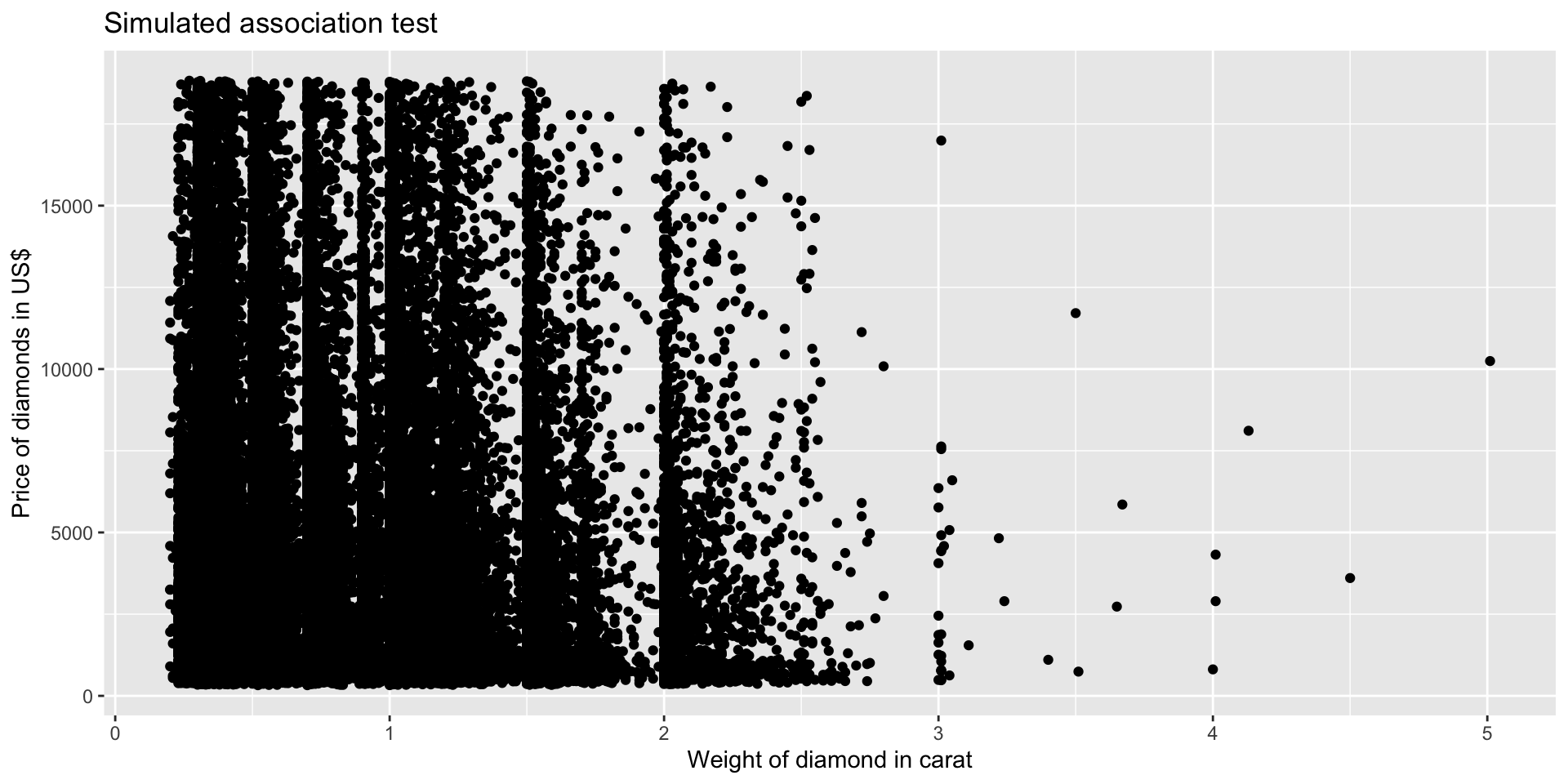
Chapter 6: Association between quantitative variables
STAT 1010 - Fall 2022
Learning outcomes
By the end of this lesson you should:
Perform a visual association test
Know how to read a scatterplot to describe associations between quantitative variables
Know how to quantify associations in quantitative variables
Use a line to describe associations in linear relationships
Understand spurious correlations and lurking variables
Associations
- \(\chi^2\) tests are used for associations in categorical data
- What is used to find associations in numeric data?
Plots
- variable on the \(y\) axis
- dependent
- response
- outcome
- variable on the \(x\) axis
- independent
- explanatory
- predictor
Price vs carat
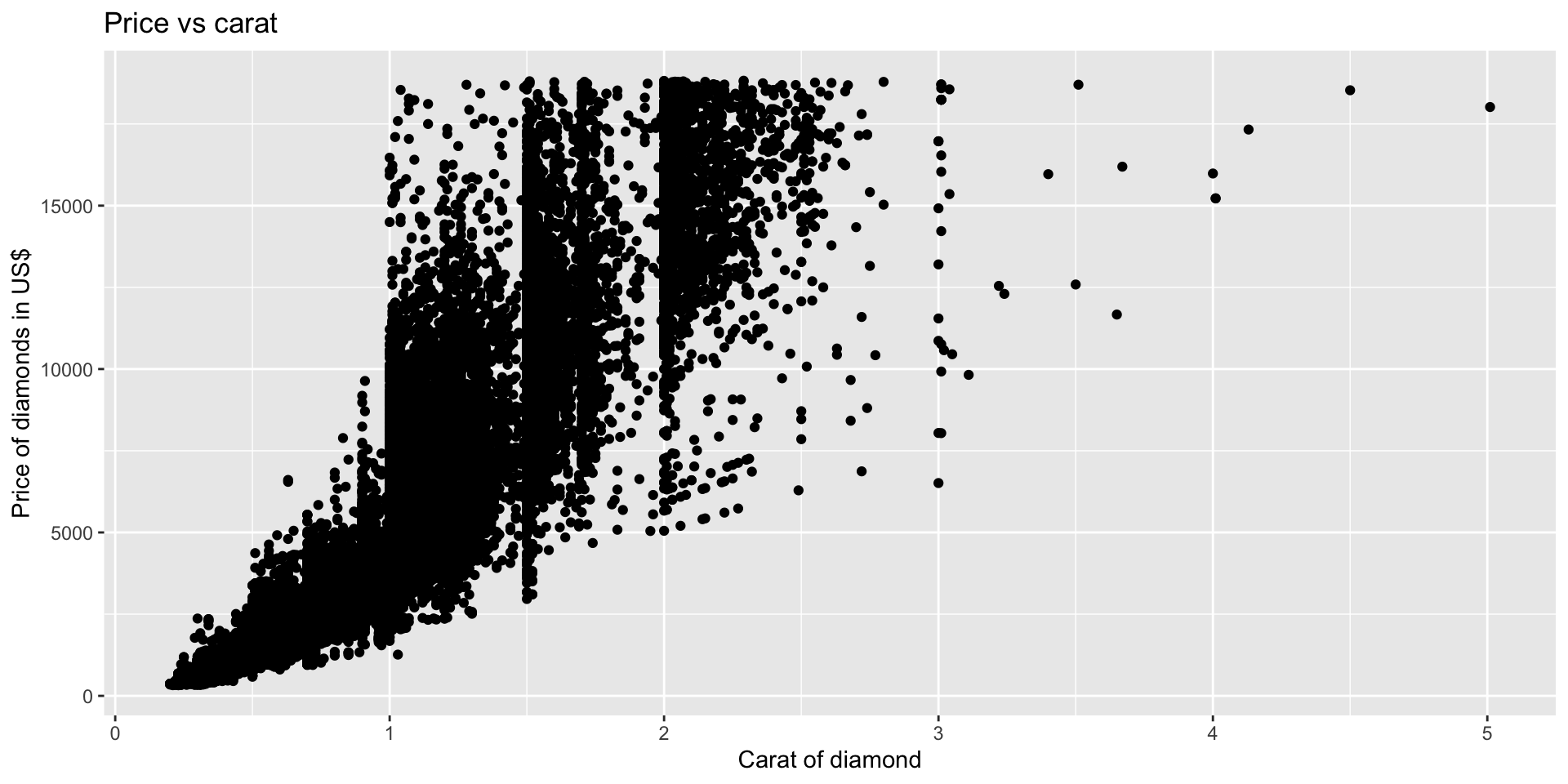
Visual association test
diamonds %>% # filtered data
slice_sample(n = nrow(.)) %>% # random sample rows
pull(carat) %>% # take out the variable carat
bind_cols(., diamonds$price) %>% # price in the same order and bound to carat in different order
ggplot() + # into ggplot
geom_point(aes(y = ...2, x = ...1)) + # using the new names
labs(title = "Simulated association test",
x = "Weight of diamond in carat",
y = "Price of diamonds in US$")Describing a scatter plot
- Trend or direction
- positive
- negative
- Curvature
- linear
- nonlinear
- exponential
- quadratic
- Variation
- homoscedasticity (similar variance)
- heteroscedasticity (different variance)
- Outliers
- any weird points (explore these)
- Groupings
Describe these plots
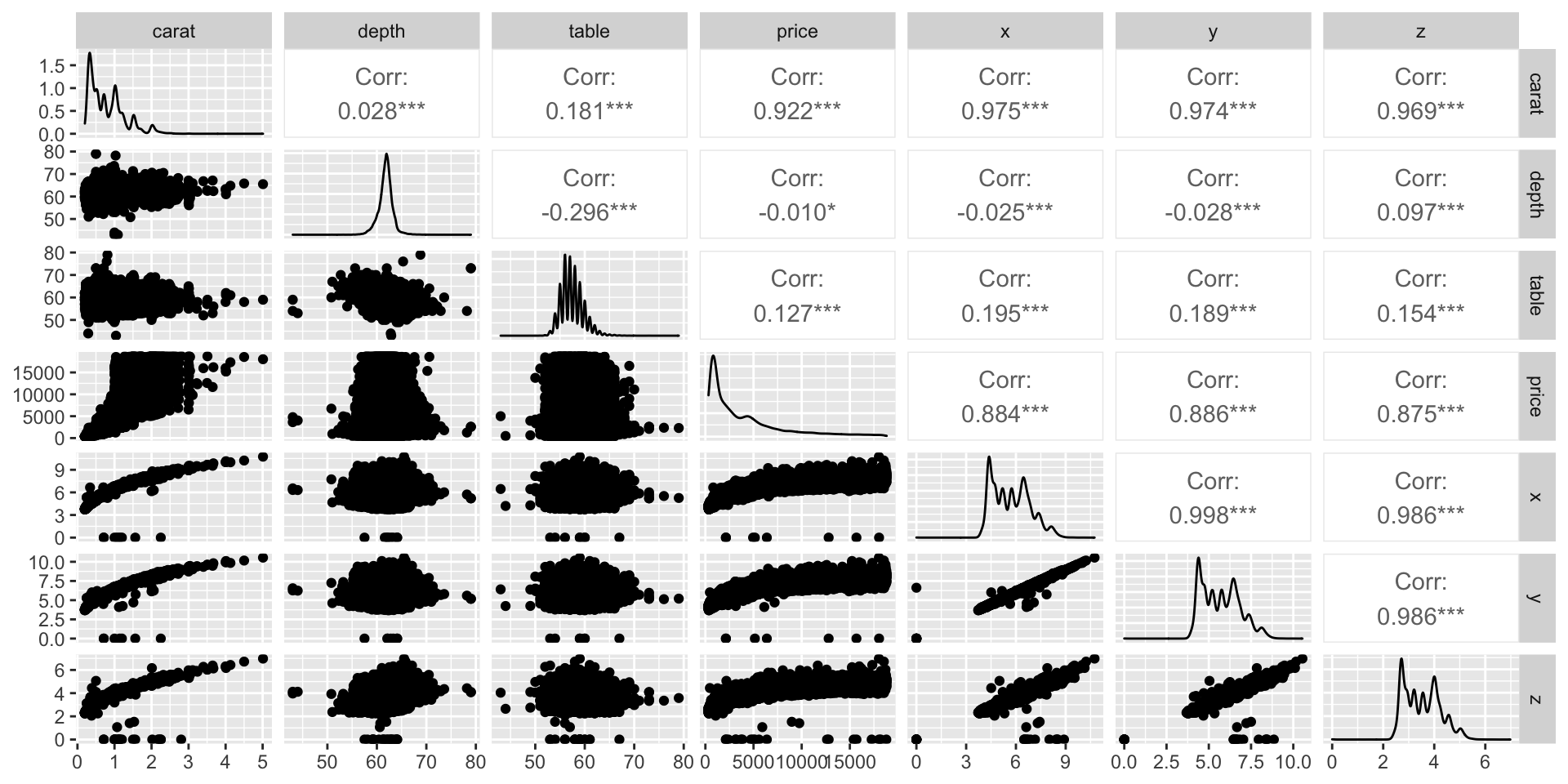
Measuring association
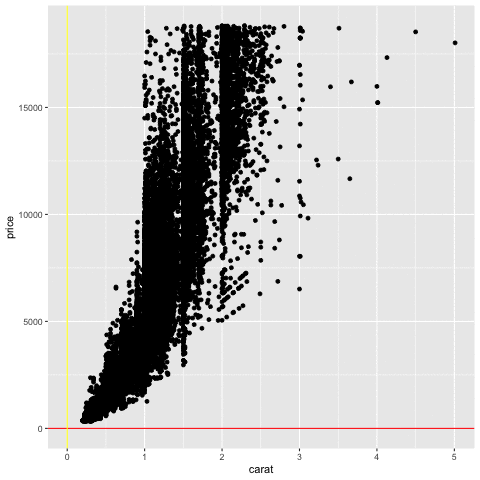
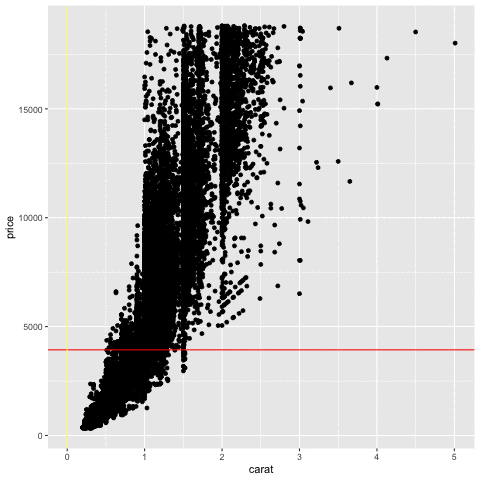
Measuring association
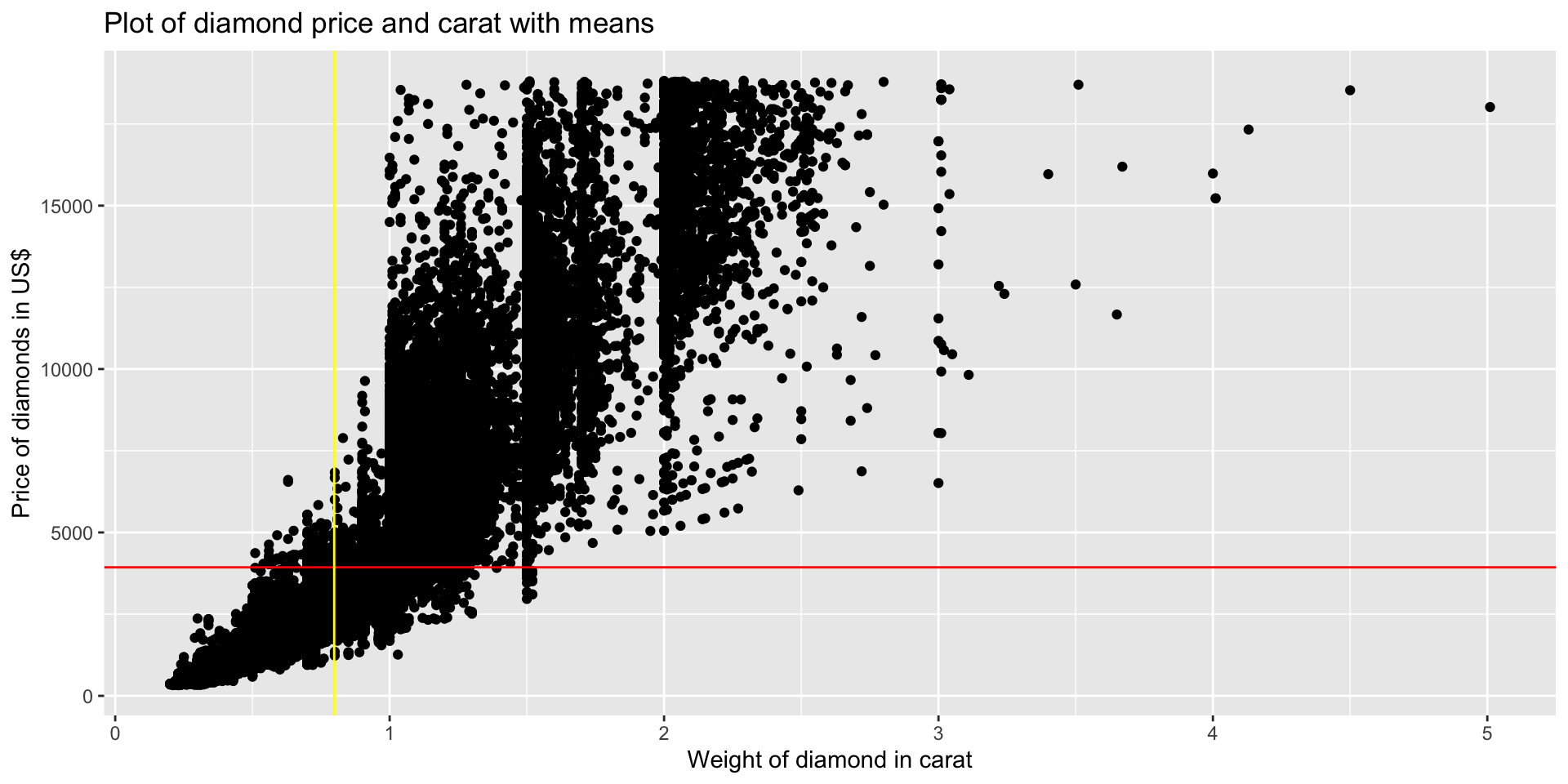
Covariance
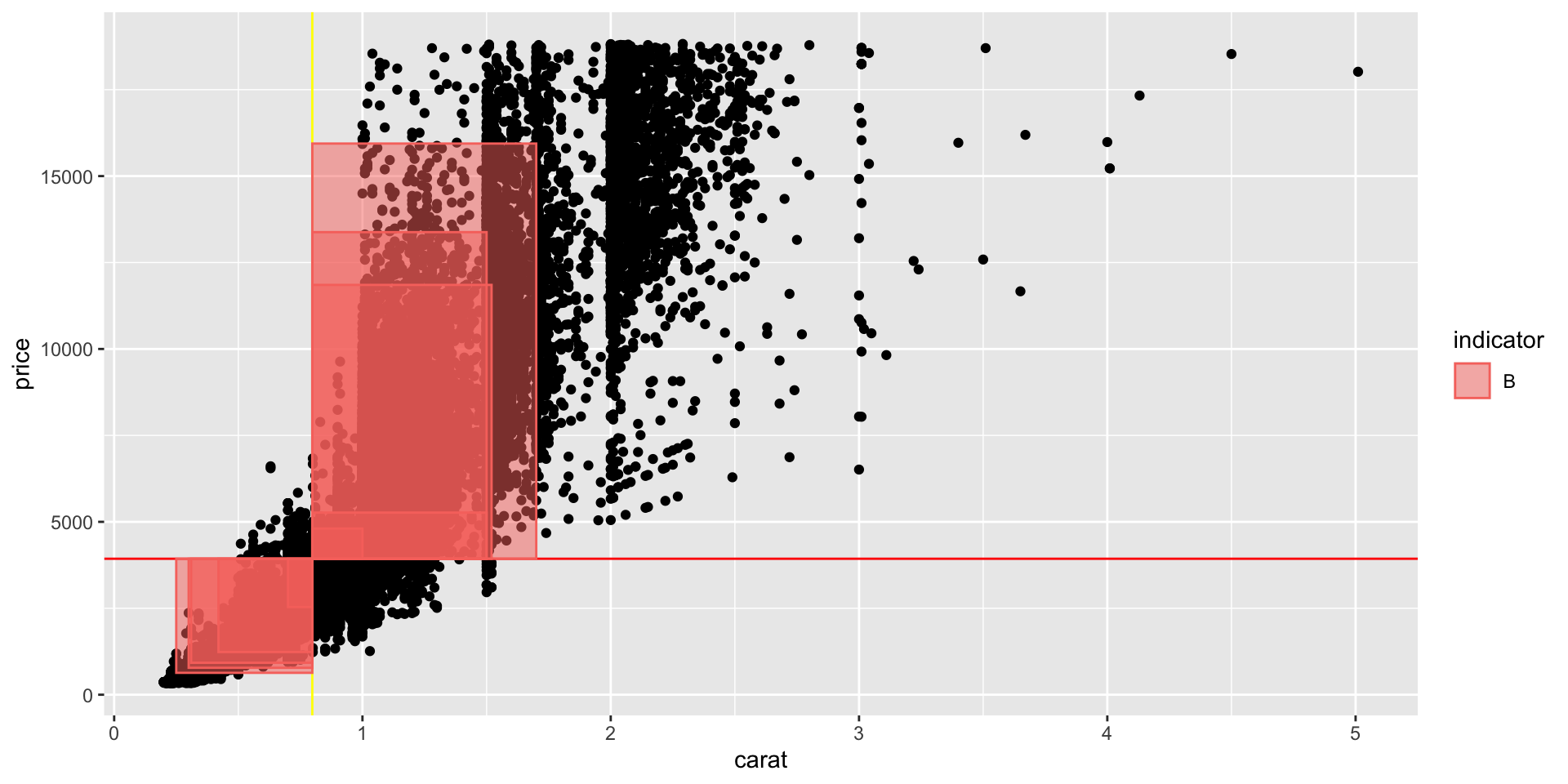
Covariance math
\(cov(x, y) = \frac{(x_1 - \bar{x})(y_1 - \bar{y}) + (x_2 - \bar{x})(y_2 - \bar{y}) + \ldots + (x_n - \bar{x})(y_n - \bar{y})}{n-1}\)
Correlation math
\[corr(x, y) = \frac{cov(x, y)}{s_x \cdot s_y}\]
Correlation characteristics
- Referred to as \(r\)
- Strength of linear association
- \(r\) is always between \(-1\) and \(+1\), \(-1 \leq r \leq 1\).
- \(r\) does not have units
Computing in R
[1] 1742.765[1] 0.9215913Line of association
\[ y = mx + b \]
- \(m\) is gradient \(b\) is the \(y\) intercept
Gradient and slope
\[ m = \frac{r \cdot s_y}{s_x} \] \[ b = \bar{y} - m \bar{x} \]
Fitting by hand
\(r = 0.9215913\)
\(s_{price} = 3989.44\)
\(s_{carat} = 0.4740112\)
\(m = \frac{r \cdot s_{price}}{s_{carat}}\)
\[\begin{aligned} m &= \frac{r \cdot s_{price}}{s_{carat}} \\ &= \frac{0.9215913 \cdot 3989.44}{0.4740112} \\ &= 7756.426 \end{aligned}\]
Fitting by hand
\(b = \overline{price} - m \cdot \overline{carat}\)
\(\overline{price} = 3932.8\)
\(\overline{carat} = 0.7979397\)
\(m = 7756.426\)
\[\begin{aligned} b &= \overline{price} - m \cdot \overline{carat} \\ &= 3932.8 - 7756.426 \cdot 0.7979397\\ &= -2256.36 \end{aligned}\]
Our model is: \(\widehat{\text{price}} = -2256.36 + 7756.426 \cdot \text{carat}\)
Prediction by hand
for carat values \(2.5\)
\(\widehat{\text{price}} = -2256.36 + 7756.426 \cdot \text{carat}\)
\[\begin{aligned} \widehat{\text{price}} &= -2256.36 + 7756.426 \cdot \text{carat} \\ &= -2256.36 + 7756.426 \cdot 2.5 \\ &= \$17135 \end{aligned}\]
Fit & predict in R
# library tidymodels
library(tidymodels)
## Assign the least
## squares line
least_squares_fit <-
linear_reg() %>%
set_engine("lm") %>%
fit(price ~ carat, data = diamonds)
## NOTE: outcome first, predictor second
## Find the prediction
predict(least_squares_fit, tibble(carat = c(1, 2, 2.5, 4)))# A tibble: 4 × 1
.pred
<dbl>
1 5500.
2 13256.
3 17135.
4 28769.Warnings
- ALWAYS draw plots first
- numeric variables
- Linear relationship
- Check for outliers
- Lurking variables
Spurious correlations
- 100% of people who eat ketchup die
- amount of sunscreen used and probability of getting skin cancer
- birth order and probability of down syndrome
- countries with more smokers also have higher life expectancy
- More shark attacks are associated with higher levels of ice cream sales.
- The more volunteers at a natural disaster, the more destruction
More spurious correlations
These variables are called lurking variables or confounders.
Lurking variables are not considered in the statistical analysis
Confounders are considered
There are both known and unknown confounders, uknown confounders are lurking variables.
Click here for more spurious correlations
Your turn
Click here or the qr code below
